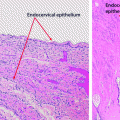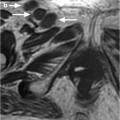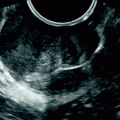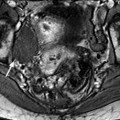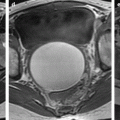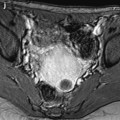Jean Noel Buy1 and Michel Ghossain2
(1)
Service Radiologie, Hopital Hotel-Dieu, Paris, France
(2)
Department of Radiology, Hotel Dieu de France, Beirut, Lebanon
Abstract
In phenotypic females, absence of both ovaries usually is associated with an abnormal karyotype and a syndrome of gonadal dysgenesis. In such cases, bilateral streak gonads, or a unilateral streak gonad and a contralateral intra-abdominal testis are usually found.
6.1 Absent Ovary [1]
In phenotypic females, absence of both ovaries usually is associated with an abnormal karyotype and a syndrome of gonadal dysgenesis. In such cases, bilateral streak gonads, or a unilateral streak gonad and a contralateral intra-abdominal testis are usually found.
Rarely, one ovary may be absent in an otherwise normal woman, usually representing an incidental finding at operation (Fig. 6.1). The differential diagnosis includes (1) ectopic ovary, which may lie at the level of the liver, close to the kidney, within the omentum, or within an inguinal hernia, and (2) adnexal torsion with atrophy or autoamputation.
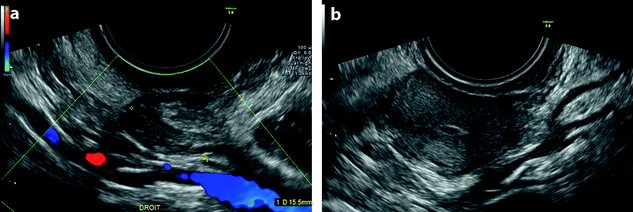

Fig. 6.1
Left absent ovary. Thirty-year-old woman; infertility. Absence of previous surgery. EVS (a) normal right ovary. EVS (b) in the left part of the pelvis, absence of the left ovary. Coelioscopy confirmed the diagnosis
6.2 Lobulated, Accessory, and Supernumerary Ovary [1]
1.
Lobulated Ovary
Definition: divided by one or several fissures into two or more lobes
2.
Accessory Ovary
Definition: normal ovarian tissue located in the vicinity of a normal ovary, with which it has a direct or ligamentous attachment
3.
Supernumerary Ovary

